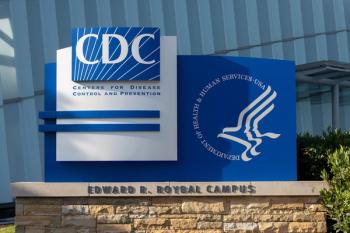
- Medical Economics October 2025
- Volume 102
- Issue 8
- Pages: 12
AI scribes linked to lower physician burnout, study finds
Key Takeaways
- AI scribes significantly reduced physician burnout and improved well-being in two major U.S. health systems.
- Mass General Brigham saw a 22-point drop in burnout, while Emory reported increased positive documentation impact.
Pilots at Mass General Brigham and Emory Healthcare show significant reductions in documentation burnout.
The survey-based study tracked more than 1,400 clinicians at
Findings from two systems
At Mass General Brigham, burnout prevalence fell from 52.6% to 30.7% after 84 days — a 22-point drop. At the midpoint, 42-day mark, burnout rates had already fallen to 29.4%. At Emory, the share of clinicians reporting that documentation positively affected their well-being rose from 1.6% before adoption to 32.3% after 60 days.
Although response rates were generally modest — 22% at Mass General Brigham and 11% at Emory — survey participants consistently described a meaningful impact.
Nearly half of Mass General Brigham respondents reported using AI scribes for at least half their visits, while 43.5% of Emory respondents used them for most or all encounters.
Clinicians find more time — and challenges
According to clinician feedback, ambient documentation eased workloads and restored satisfaction in patient care. Some respondents said it gave them back an hour a day or allowed more direct contact with patients and families.
One infectious disease specialist noted that the system “definitely improves my joy in practice because I get to interact with patients and look them in the eye without worrying I will forget what they are saying later.”
Others reported drawbacks.
Some found the technology less useful for certain visit types, like pediatric physicals or psychiatry consultations. Others said AI-generated notes could be too bulky or required additional editing, and a few reported it added one to two hours of work each day.
Scaling the technology
Mass General Brigham first piloted AI scribes in July 2023 with 18 physicians. By July 2024, more than 800 clinicians were participating, and as of this spring, over 3,000 clinicians across the system had access.
Expansion to nurses, therapists and other health professionals is planned later this year. Emory has also expanded use beyond initial specialty pilots.
“Ambient documentation technology has been truly transformative in freeing up physicians from their keyboards to have more face-to-face interaction with their patients,” said Rebecca Mishuris, M.D., M.P.H., M.S., co-senior author and chief medical information officer at Mass General Brigham. “Our physicians tell us that they have their nights and weekends back and have rediscovered their joy of practicing medicine. There is literally no other intervention in our field that impacts burnout to this extent.”
The authors emphasized that these were pilot studies, and the results may reflect early adopters rather than the broader physician population. Surveys also relied on self-reported use, rather than objective tracking, and participation rates were low.
Still, median satisfaction was high, with both systems recording a likelihood-to-recommend score of 8 out of 10.
Future studies will track whether benefits persist as AI evolves and adoption widens.
Researchers said that measuring outcomes like patient satisfaction, financial sustainability and clinical workflow integration will be critical to understanding long-term impact.
Articles in this issue
about 2 months ago
The new malpractice frontier: Who’s liable when AI gets it wrong?about 2 months ago
Starting strong: What physicians need to launch a concierge practiceabout 2 months ago
An action plan for medical practice cyber defense3 months ago
How to think about insuranceNewsletter
Stay informed and empowered with Medical Economics enewsletter, delivering expert insights, financial strategies, practice management tips and technology trends — tailored for today’s physicians.


















